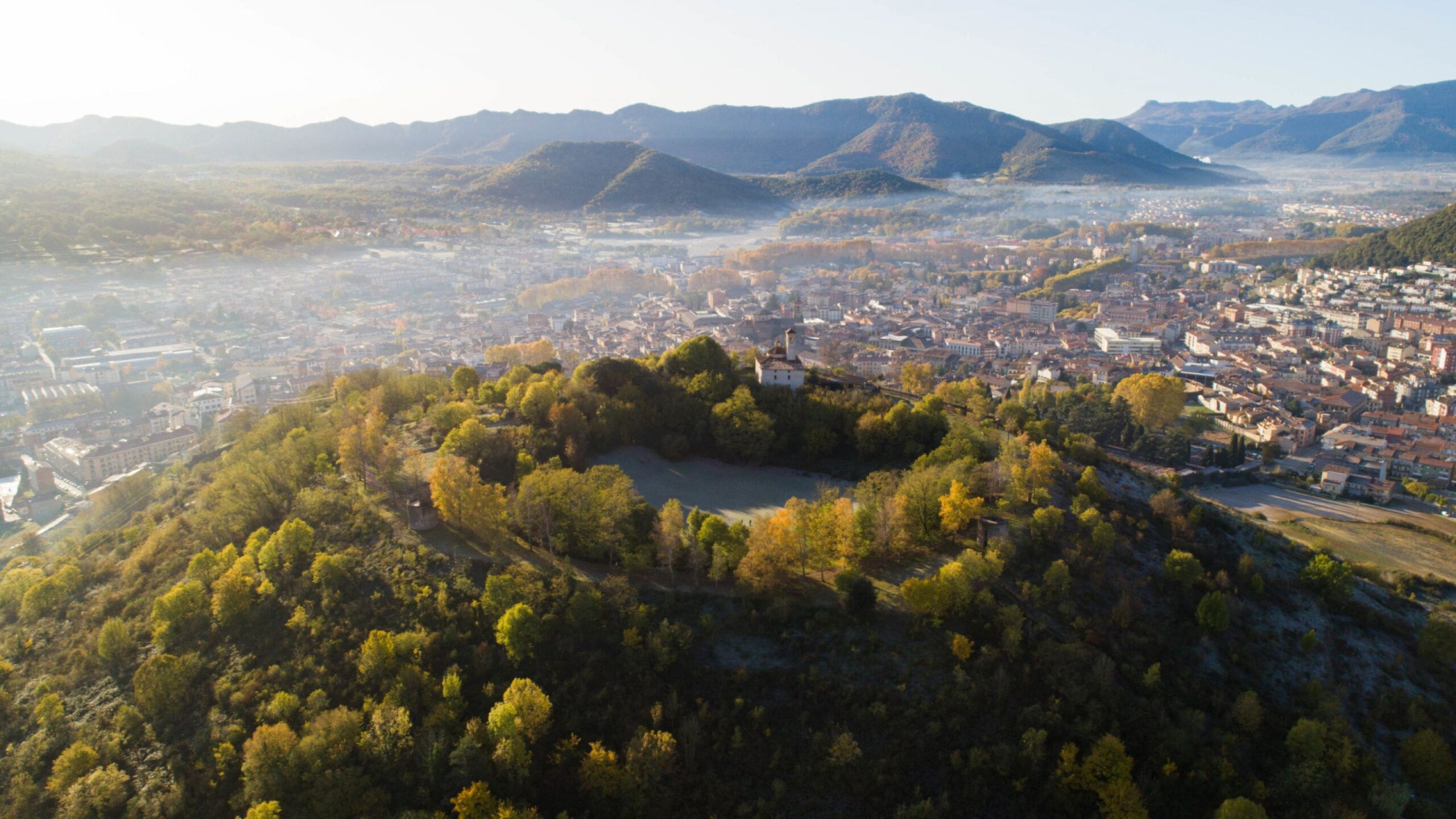We can discover the city of Olot in many ways. Along this route we will get to know the city through its volcanoes. On top of them we will discover its defence towers and enjoy the different perspectives of the city. Therefore, this route complements the rest, which also focus on Olot: Authentic Olot and the Modernist La Garrotxa.All the volcanoes found in Olot, as well as the ones in La Garrotxa Volcanic Zone Natural Park are dormant, that is to say, they do not erupt lava, although it may become active again in the future. We will start this route in the building called the Hospice. There we will visit La Garrotxa Museum and wander around the historical centre of Olot. We will see singular buildings and streets with centuries of history, as well as a lifely commercial life, complemented by the sights of local and handmade products. To go up the first volcano we will pass by the Firalet, a promenade dating from the beginning of the 20th century which was reformed in 2010, using basaltic stone of La Garrotxa. Before, we must visit the Espai Cràter, the interpretation center of the Garrotxa volcanoes. The semi-underground building is located opposite the municipal cemetery. To climb Montsacopa we will follow the signposted itinerary. The Montsacopa controls the whole city of Olot. It is a strombolian volcano with a 120 metres diameter and 12 metres deep. You can spot it from nearly every point of view. Sant Francesc chapel, facing the city, is one of the most characteristic images of Olot. From up here, we will be able to go round the volcanic cone and admire some stunning views. From the church we can admire the city of Olot, with its old centre and the new city which is expanding in every direction. If the church faces the city, the two towers are faced in the opposite direction, one to the north-east and the other to the south-west. These towers were used as a defence tool during the Carlist Wars. This can help us understand how the volcano, during wars, was a useful high point from where you could overlook the city and spot the enemies who were coming to assault it. After those wars, around 1876, the towers were rebuilt in case another war took place. Today we can go to the top of them and see the perspective the soldiers had when defending the city. Once having gone round the upper part of the cone and contemplating the panoramics, we can go down to the crater following the sign-posted path. Before going down we must note that on each side of the city there are two volcanoes: Montolivet and Bisaroques. We will go down to the old centre again until we find the Clarà square, from where we will have the perspective of Montolivet volcano, which we can easily access following a path which leaves from the same square. Once we get at the top, we will discover another defence tower built in 1835 during the Carlist Wars. This is the only tower which we cannot access, since there is an aerial installed. From up here Montolivet offers a splendid perspective of the city and also of the Pyrennees. This volcano is alienated with the Montsacopa and the Garrinada, between the Riudaura creek and the river Fluvià. On the other side of the river, on the east of the city, we will find the Bisaroques volcano, the smallest one in the city. In the middle of the woods we will also see another defence tower built during the Carlist Wars, which evidences that the strategic defence of Olot came from the defence towers, from where one was able to watch a great part of the territory.We have already visited the volcanoes, seen their craters and understood their role in the history of Olot. Now we can enjoy a walk around La Moixina settings: a magic place with a beautiful landscape which has been a source of inspiration for many painters and artists. Following the Green Road we will arrive in the Pedra Tosca Park, also known as Pedra Tosca forest, an area of small volcanic hills.In this park, close to the river Fluvià, we will find some singular elements: the blowholes. They are small holes on the floor which may have an air flow. For centuries, there was not a scientific answer to this phenomenon. Nowadays we know that, geologically speaking, they resemble water springs, in that the porous and permeable subsoil gets to the earth’s surface. In this case, though, the fluid which emerges is not water, but the air present in the subsoil areas with no water. There are several blowholes in the Batet area, although some are still preserved inside houses. However, the volcanoes are more than geographical or geological peculiarities. Their presence has played an important role in the life of the city, as well as that of its inhabitants. From the volcanic materials used to build the streets to the buildings and parks with singular architectural features; from the landscapes which have influenced the Olot School of Landscape to the fine volcanic cuisine and the typical products of this land. Hence, it is clear that the volcanoes are an important cultural part of Olot.
